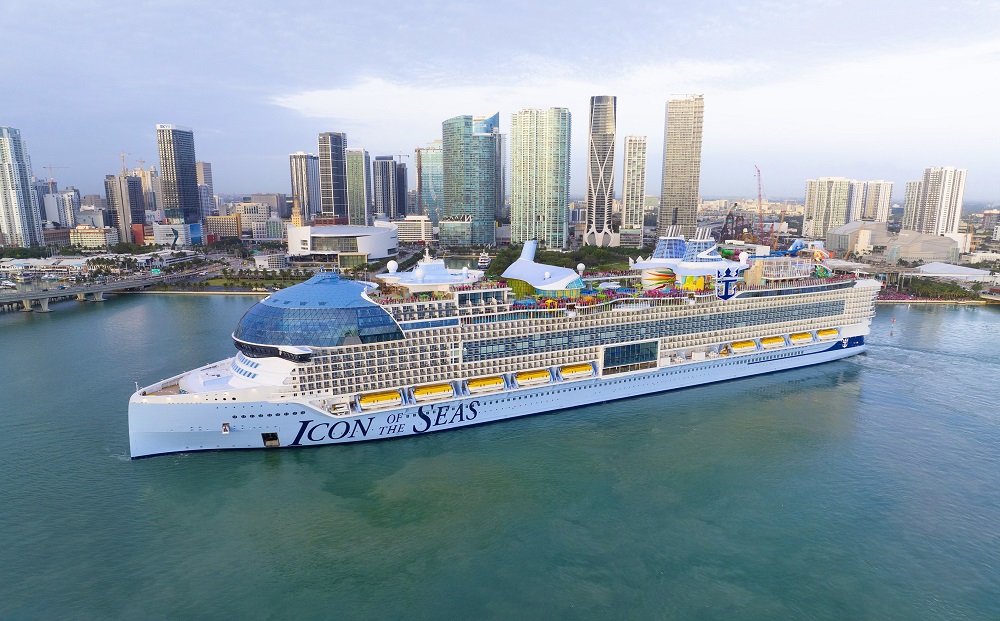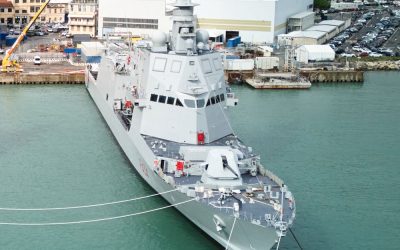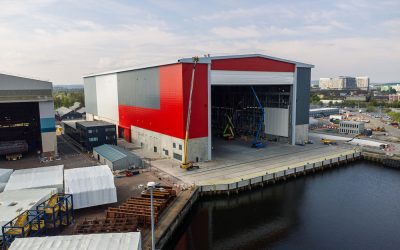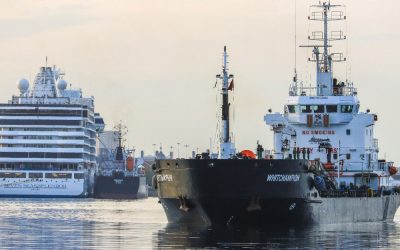The economies of scale are a powerful driver to build ever larger cruise ships, but has a maximum size been reached? Kari Reinikainen reports
Forty years ago, the shipping media carried stories about a 250,000gt cruise ship that the chairman of what was then Norwegian Caribbean Line (NCL), Knut Kloster, was planning to build: it was more than three times the size of the largest cruise ship then in service. With the introduction of Royal Caribbean International’s (RCI) 248,663gt Icon of the Seas, the scale that Kloster thought of four decades ago has now been reached.
Economies of scale have been a powerful driver in the trend towards ever bigger cruise vessels and they may continue to encourage owners to look for future vessels that are even bigger than the three Icon class ships on order at Meyer Turku in Finland. “Cruise vessels will, in my opinion, get bigger,” summarises Finn Wollesen, managing director of consultant naval architects Knud E. Hansen in Denmark.
While the contemporary market is traditionally the one that employs the biggest ships, such as Icon of the Seas, the trend towards larger tonnage has not been limited to this segment.
In the premium market, the first newbuildings of Celebrity Cruises that entered service in the early 1990s had a gross tonnage of about 47,500. The company, which is now part of the Royal Caribbean Group, is currently building its Edge class of ships, the largest of which have a gross tonnage of 140,600.
Even at the very top of the price range, the trend goes towards larger tonnage. The first cruise yachts, Seadream I and Seadream II, were built in the mid-1980s and have a gross tonnage of about 4,200. By contrast, Ilma, the next cruise yacht of Ritz Carlton, is due to have a figure in the region of 46,750gt.
Kristian Knaapi, sales manager at Finnish consultant naval architects Deltamarin says that transition to CO2-free fuels might increase the main dimensions of a future newbuildings. “However, the needed space for new fuels is actually not [taken] away from passenger areas. The tanks and the other needed equipment will be located in areas where there are no passengers, mainly under the main deck into machinery spaces,” he says.
“Most probably the investment cost for the vessel will be slightly bigger. This is mainly caused by bigger outer dimensions or new added technology needed for alternative fuels,” he points out.
From yachts to floating cities
Richard Fain, now chairman of the Royal Caribbean Group, once recalled in a presentation how the first purpose-built cruise ships that entered service in the early 1970s were externally modelled after yachts to set these ships of about 20,000gt apart from the appearance of ocean liners, some of which were still in service.
By the end of the following decade, ships of some 75,000gt were entering service and these were essentially floating hotels. A decade later, the largest contemporary market vessels were of about 137,000gt and could be thought of as floating resorts. By 2010, the first cruise vessels in excess of 200,000gt were in service and these are essentially floating cities.
There are a few important points here. The first one is the gradual evolution of the size of these ships: a jump from some 70,000gt to 250,000gt that Kloster contemplated four decades ago. A step-by-step growth was possible because the gradual growth of the leading operators, both organic and through mergers and acquisitions, enabled them to finance that growth.
This again was possibly thanks to the steady increase in demand that the industry has enjoyed over the decades. Kloster’s vision – partly based on the success of the 70,202gt SS Norway, a former ocean liner built as SS France in 1962 that NCL had introduced in 1980 – presumably had two key elements of the industry in the background: economies of scale and supply-led growth.
Cruise industry executives frequently mention the power of new vessels to drive the business forward. In all its segments – contemporary, premium and luxury – the gradual increase in the size of ships has also led to a far wider range of services on offer.
The first-generation cruise liners had a main dining room and a buffet; today some ships have almost two dozen dining venues. Spas that originally comprised a few treatment rooms have evolved to relaxation and wellness areas covering hundreds of square metres.
Land-based and operational challenges
While the two principal drivers that encourage owners to look at ever larger ships – economies of scale and supply-led growth – remain intact, some factors that have the potential to discourage them are also on the horizon and these are based on land.
One of them is the need to drydock these ships, while investment in ports to handle very big ships is often slow to take place. In some locations, a strong anti-cruise sentiment is emerging as part of the locals’ concerns over the effects of overtourism to their communities.
The size of drydocks is a factor that can potentially limit the growth of cruise ships in the future. One of the important aspects is draught. Many of the largest drydocks, particularly in Europe, were constructed in the third quarter of last century with the building of large tankers in mind.
This business was eventually lost to shipyards in Asia and the facilities in Europe can be used for repair and refit work. A tanker in ballast has a very shallow draught, but the largest cruise ships draw up to 10m of water. There is little than can be done to reduce the draught to allow a cruise ship to enter drydock, explains Rogier van der Laan, cruise sales manager at Damen Shiprepair & Conversion in the Netherlands.
The Damen group itself has two very large drydocks, one in Rotterdam and the other in Brest and the French facility can accept vessels drawing up to 13m of water, which is more than any cruise vessel does, he points out.
The size of largest cruise ships has increased very quickly and the land-based infrastructure needed to handle these ships often has not kept pace with this development, says John Garner, managing director of JG Maritime Solutions Ltd in the UK.
Handling the turnaround of a ship the size of Icon of the Seas, with a capacity of 7,600 passengers when all berths are in use, is a major logistical operation that requires not just the right facilities, but also an organisation that runs efficiently: cruise ships usually arrive early in the morning and sail late afternoon on the same day after new passengers have embarked at the turnaround port.
In many ports, jetties are not long enough to handle the largest cruise ships. This can be addressed by either lengthening the jetty or building a dolphin, with mooring facilities and a walkway to the pier for shore personnel.
However, as the superstructure of a modern cruise ship has cabins that mostly have balconies, it is very high and has a large area to catch winds. This poses operational challenges as strong winds have in some cases pulled bollards off their mountings and large cruise ships have also had minor collisions when manoeuvring in port in windy conditions, Garner points out.
Back to the future?
While economies of scale, including fuel economy, will continue to advocate even larger vessels, this may lead to a change in the dynamics of the cruise industry itself. Not all ports can or even want to accommodate very large ships, which cater for the contemporary market segment. This can lead to a diversification of destinations from the side of ports as some welcome the largest ships, while others may focus on smaller ships of more upscale lines instead.
Icon of the Seas exceeded the size of the previous biggest cruise ship in the world, RCI’s Wonder of the Seas, by about 12,000gt. Both in absolute gross ton and in percentage terms, the growth is slowing. In the 1980s, the size of largest cruise ship newbuildings roughly doubled – converted liners still held the pole position as largest cruise liners in the world for most of the decade – while Voyager of the Seas of 1999 and of about 137,000gt was roughly one-third larger than the previously largest cruise ship then in service.
A sharp increase in the tonnage of the Icon class might require a concept change, both in terms of the design of the vessel and how it would be operated. Port infrastructure is probably the most critical point. Cruise lines themselves are already building their own terminals in key turnaround ports to ensure smooth operations in them. But ports of call could be another matter. Perhaps huge tenders that resemble landing craft of amphibious assault ships of major navies could solve the problem there. After all, this was part of the vision of Kloster four decades ago.






